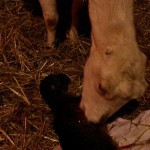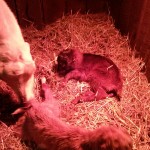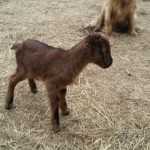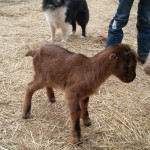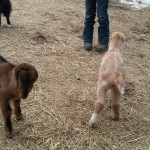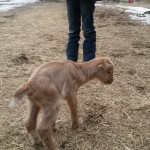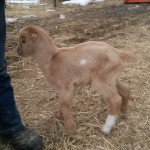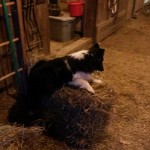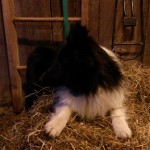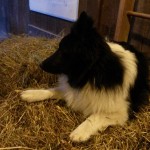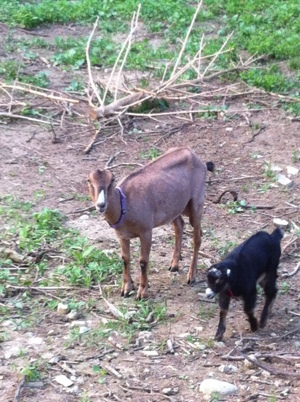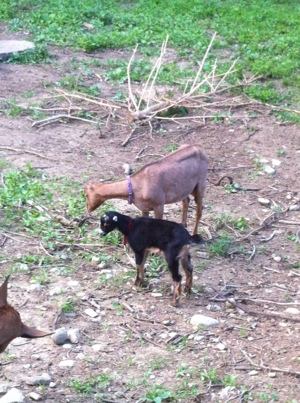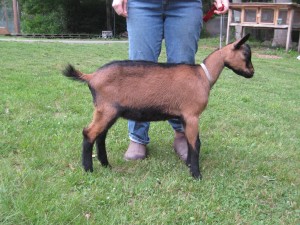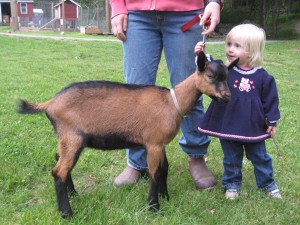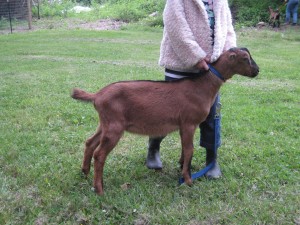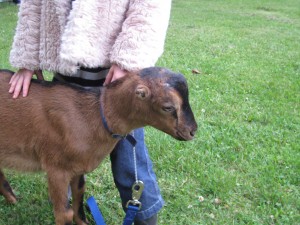Last night, Anna went to bed as I stayed up working on some things (ok, I was on Facebook). Around 11, I was ready for bed, but first went to the barn to check on West View Swan’s Saffron, one of our Lamancha does, who was in the kidding stall for the night since she was already 2 days overdue. I discovered she was in labor.
I headed back in and woke Anna to tell her I was getting more warm clothes and heading back out to the barn since Saffron was in labor. She thought I should get a couple of hours of rest first and then go out around 1. I didn’t think so. As she drifted off to sleep, I headed back to the barn. When I arrived, the first kid was already on the ground. She was a long legged doeling that looks a lot like her sire, Blue-Ridge Apache and weighed in at 6.6lbs. Her brother followed not too long after and weighed in at 6.9lbs, and has the look of his mother. Both started with wobbly legs, but by this afternoon, they were getting around a little better, so we took them out for some quick photos.

Introducing Sawyer Farm’s Sassafras (dark colored doe) and Sawyer Farm’s Birch (light colored buck).
Turbo, our Sheltie, was watching over the photo shoot. After we finished, he went back in the barn and hopped up on a bale of hay to take a break.

